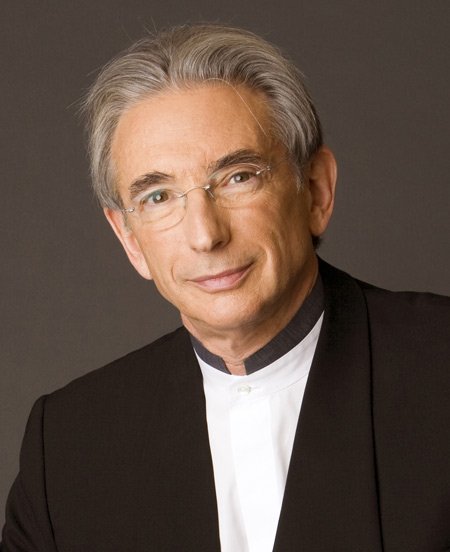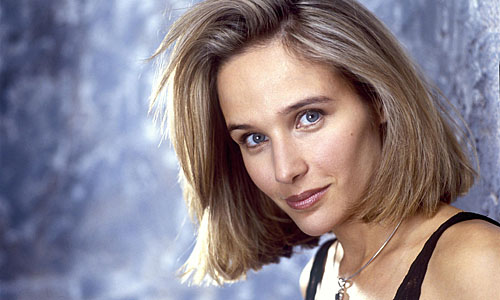Tilson Thomas, Philadelphia Orchestra make a sensational team at Carnegie Hall
Yannick Nézet-Séguin was forced to bow out of Friday evening’s concert at Carnegie Hall after his doctor advised him not to travel due to a severe sinus infection. It must have come as a disappointment to the musicians of the Philadelphia Orchestra that their fiery young music director couldn’t join them on their first of three visits to New York this season. Still, to land Michael Tilson Thomas as a replacement is quite a coup.
The conductor wasn’t the only switch of the evening: Hélène Grimaud was originally slated to play Brahms’s Piano Concerto no. 2 in B-flat, but after learning of the personnel change, opted to play No. 1 in D minor instead, hoping to tackle the second with Yannick at a later date.
The D minor concerto is hardly a cakewalk. It requires tremendous virtuosity, which Grimaud certainly has. Her technical ease allowed her to play with complete freedom, floating her crisp passagework out into the audience. The first movement’s big, open chords seemed to burst out of the piano in her arching phrases.
After the first movement, there was a pause of several minutes as between thirty and forty latecomers wandered in and struggled to find their seats. The Carnegie Hall house managers, in their wisdom, continue to allow tardy concertgoers to enter between movements, and the result is often an extended delay that disrupts the momentum of the performance. Tilson Thomas clearly did not appreciate the disturbance, staring down the stragglers as they milled about the aisles.
It was hard to get back into the right mood for the Adagio after the interruption, but Grimaud managed. Many performers make the mistake of playing just for themselves, while others play out without living in the music. She was able to fully inhabit the piece while communicating every sentiment to the audience. Paired with the warm velvet of the Philly strings, her tender sensitivity was hypnotic.
Grimaud jumped right into the opening of the rondo, which she dispatched with enormous pluck. The strings played with vigorous bite, but there was more discipline than passion in their work. Tilson Thomas seemed to be holding them back ever so slightly, when just a bit more menace would have helped to bring more life to the piece.
The second half of the concert offered Berlioz’s Symphonie fantastique. Romantic repertoire is a great fit for this orchestra’s brilliant, intense sound, and the rep doesn’t get much more hyper-Romantic than this.
Tilson Thomas’s interpretation was distinctive and precise, but never felt caged. There was a lot of micromanaging—not of the seasick kind, but of the kind that brings out the colorful details of the score. The first movement is an up-and-down, manic-depressive experience, and Tilson Thomas navigated it expertly, giving it pulsating, throbbing energy.
The ball scene began with intense, almost ominous anticipation, which led into the sweeping waltz. Their playing here was not quite as precise as elsewhere, but the tradeoff was splendid breadth of sound.
Most of the praise given to the Philadelphia Orchestra is lavished on its lush string section—and rightly so—but the pastoral third movement gave the woodwinds their moment of glory, and they took advantage, playing with brightness and purity. The meadow scene was a prime example of the sort of dynamic control that Tilson Thomas brings to his performances, as he got the orchestra to shift from level to level without the slightest hitch.
A vivid and imposing execution march followed, and here, as before, Tilson Thomas had a terrific handle on his levels and balances. Each entrance was at precisely the right dynamic, as though triggered by the push of a button. The macabre spectacle of the scene was captured with booming sforzandi and sharp articulation.
The “Witches’ Sabbath” scene of the finale was fabulously spooky, its eerie opening leading into a wild, manic, grin-inducing dance. The strings played with gleeful mischief as the brass bellowed the ominous Dies Irae theme. The orchestra summoned tremendous energy for Tilson Thomas, who, like Philly’s music director, is an animated figure on the podium. Earlier in the concert he accidentally and audibly struck his baton on the rail behind him on a particularly wide beat, and here, as he careened the piece to its breakneck finish, he went momentarily airborne.
The Philadelphia Orchestra returns to Carnegie Hall on February 21. The program will offer Strauss’s Metamorphosen, Shostakovich’s Cello Concerto No. 1 with soloist Truls Mork and Beethoven’s Symphony No. 3. carnegiehall.org


Posted Dec 16, 2013 at 9:40 am by William A. Berggren
I would have preferred a more thorough and extensive review of Helene Grimaud’s performance at Carnegie Hall Friday December 6, 2013. It was one of the greatest/most beautiful performances I have had the pleasure of seeing/experiencing, comparable to that of Marie Joao Pires earlier this year. Helene Grimaud is a true artist in every sense of the word and should be brought back to CH more often and to greater effect (i., Rachmaninoff Piano Concertos no. 1 and 3!).